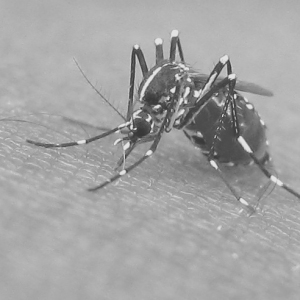
The other day, I searched the internet to figure out the economic cost of arthropod vectors. These are diseases that can be transmitted through arthropods – invertebrate animals with an exoskeleton, segmented body, and jointed appendages. If you are like
me, these are the creatures that we find ourselves swatting and killing because they include pests such as mosquitoes, spiders, mites, flies, and ticks.
As I was searching for the economic cost of arthropod vectors (think Malaria, Dengue, West Nile Virus, and Lyme disease), I found that the data was spread across the internet. A lot of the relevant information was available at the website of WHO (World Health Organization) and CDC (Center for Disease Control).
And while I was perusing the CDC website, I became particularly interested in the last paragraphs of the CDC’s Division of Vector-Borne Diseases pamphlet where I came across a new word, Nootkatone.
Nootkatone.
It’s a fun word to pronounce. But pronunciation was not why the CDC wrote about Nootkatone. Instead, the CDC wrote about about Nootkatone because of its potential use as an effective repellent and insecticide against ticks, fleas, and mosquitos (Panella et al.; Jordan, Schulze and Dolan).
However, unlike the common insect repellent, DEET, Nootkatone is a natural, organic compound (Dietrich et al.). In fact, Nootkatone, which is the main fragrant in grapefruit, is safe to drink. DEET is not.

While Nootkatone may be a natural alternative to DEET, it is expensive to obtain pure Nootkatone. So, the CDC is working with a company called Evolva to synthesize the compound at an affordable price, obtain EPA regulatory approval, and make it available to consumers.
Personally, I look forward to seeing how Evolva’s production of Nootkatone proceeds. I would love to protect myself from mosquito bites (and arthropod vectors) while smelling like grapefruit instead of DEET!
Dietrich, G., et al. “Repellent Activity of Fractioned Compounds from Chamaecyparis Nootkatensis Essential Oil against Nymphal Ixodes Scapularis (Acari: Ixodidae).” J Med Entomol 43.5 (2006): 957-61. Print.
Jordan, R. A., T. L. Schulze, and M. C. Dolan. “Efficacy of Plant-Derived and Synthetic Compounds on Clothing as Repellents against Ixodes Scapularis and Amblyomma Americanum (Acari: Ixodidae).” J Med Entomol 49.1 (2012): 101-6. Print.
Panella, N. A., et al. “Use of Novel Compounds for Pest Control: Insecticidal and Acaricidal Activity of Essential Oil Components from Heartwood of Alaska Yellow Cedar.” J Med Entomol 42.3 (2005): 352-8. Print.
Image sources: Pratheep P S (mosquito) Aleph, Raeky (grapefruit)
[…] can be reduced when we prevent mosquito bites by using insect nets or repellents (like DEET and nootkatone). Alternatively, we can kill the mosquitoes by slapping them, using insecticides, or by using […]
LikeLike